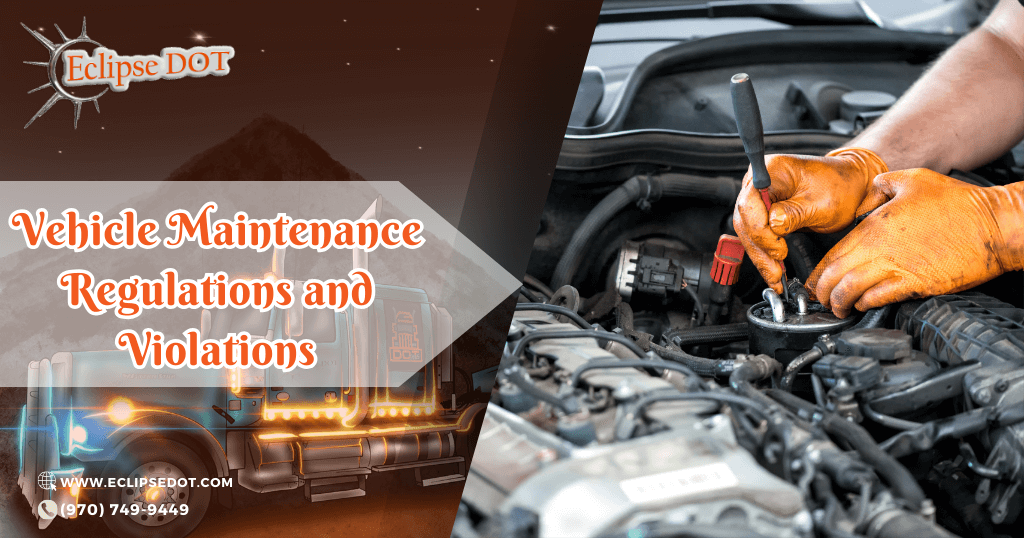Hey there, business leaders! Dan Greer here, ready to dig into the nuts and bolts of vehicle maintenance regulations. We all know that keeping your fleet in top shape isn’t just about looking good on the road; it’s about staying safe, compliant, and avoiding those fines that can hit your bottom line hard.
In this article, we’ll break down the key vehicle maintenance regulations every company that uses trucks in its operations needs to know. We’ll also cover the common violations that could sideline your vehicles and why staying on top of this is absolutely crucial. So, grab that cup of coffee, and let’s get into it!
The Big Picture: Why Vehicle Maintenance Compliance Matters
Here’s the deal: The Federal Motor Carrier Safety Administration (FMCSA) has laid out detailed rules to keep your vehicles—and everyone else on the road—safe. These rules aren’t just there for fun; they’re essential to prevent accidents and keep your business running smoothly.
DOT compliance is like a game of chess. You’ve got to think ahead, make the right moves, and avoid the pitfalls that could cost you time, money, and maybe even your business. Neglecting vehicle maintenance isn’t just a small slip—it’s like leaving your king wide open for checkmate.
Key Vehicle Maintenance Regulations You Can’t Afford to Ignore
1. General Vehicle Maintenance (FMCSR §396.3)
Let’s start with the basics. The FMCSA requires all commercial motor vehicles (CMVs) to be systematically inspected, repaired, and maintained. We’re talking about everything from brakes to tires, lights, and steering mechanisms. If something’s out of whack, it’s got to be fixed before the vehicle hits the road.
Think of it as a regular health check-up for your fleet. You wouldn’t skip out on seeing the doctor if something felt off, right? The same goes for your vehicles—keep them in good health, and they’ll keep you rolling.
2. Driver Vehicle Inspection Reports (DVIRs) (FMCSR §396.11)
DVIRs are your first line of defense in catching potential issues before they become big problems. Drivers are required to conduct a pre-trip inspection and document their findings. This includes checking critical components like brakes, tires, lights, and emergency equipment.
And it doesn’t stop there—after the trip, drivers must also complete a post-trip inspection report, noting any issues that could affect the vehicle’s safe operation. Consistency is key here, folks. Make sure these reports are accurate and submitted on time, or you could be looking at fines and violations.
3. Periodic Inspections (FMCSR §396.17)
In addition to those daily checks, the FMCSA mandates that every CMV undergo a full inspection at least once every 12 months. This annual inspection needs to be performed by a qualified inspector and covers all the major systems of your vehicle.
And remember, if the DOT asks for proof of your last inspection and you can’t produce it, you’re in for a world of hurt. Keep those records handy!
4. Brake Maintenance (FMCSR §396.25)
Your brakes are like the unsung heroes of your vehicles—when they work, everything’s smooth sailing, but when they don’t, things can go south fast. The FMCSA requires that brakes be inspected regularly and maintained according to the manufacturer’s specifications. This includes checking for worn brake linings, leaks, and making sure the brakes are properly adjusted.
According to FMCSR §393.47, your brakes need to meet specific performance standards, meaning they should be able to stop your vehicle within a certain distance. Don’t skimp on this—your safety (and others’) depends on it.
Common Violations That Could Sideline Your Fleet
Now that we’ve covered the must-know regs, let’s talk about some of the most common vehicle maintenance violations that can throw a wrench in your operations.
1. Brake Violations
Brake violations are some of the most common—and dangerous—infractions out there. Whether it’s worn-out brake pads, air leaks, or improperly adjusted brakes, these issues can lead to serious accidents. To avoid brake violations, ensure regular inspections and prompt repairs whenever you spot an issue.
2. Tire Violations
Your tires take a beating every time you hit the road. Common violations include using tires with insufficient tread depth, visible damage, or incorrect pressure. Regularly check your tires for wear and tear, and replace them as needed to stay compliant with FMCSR §393.75.
3. Lighting Violations
Lights aren’t just there to make your vehicles look good—they’re essential for safety. Violations often occur when lights are burned out, not functioning properly, or obscured by dirt or damage. Make it a habit to check all lights—headlights, brake lights, turn signals, and reflectors—during your pre-trip inspection. FMCSR §393.9 outlines the requirements for lighting on CMVs.
4. Steering Mechanism Violations
Steering issues are no joke—they can lead to a loss of control over the vehicle. Common violations include worn or loose steering components, which can cause the vehicle to drift or respond unpredictably. Regularly inspect the steering system, and don’t ignore any signs of trouble, like excessive play in the steering wheel or unusual noises when turning.
5. Failing to Document Inspections
One of the biggest mistakes drivers and fleet managers make is failing to properly document their inspections. Without proper documentation, you have no proof that you’ve complied with FMCSA regulations. Keep detailed records of all inspections, repairs, and maintenance activities, and ensure they’re readily accessible during an audit.
Why Staying Compliant is a No-Brainer
Staying compliant with vehicle maintenance regulations isn’t just about avoiding fines—it’s about ensuring the safety of everyone on the road. Violations can lead to out-of-service orders, which can cripple your operations and damage your reputation. In the worst-case scenario, a maintenance-related accident could result in severe injuries or fatalities, leading to lawsuits and devastating financial consequences.
Partner with Eclipse DOT for Maintenance Compliance
Let’s be real—staying on top of all these regulations can be overwhelming. That’s where Eclipse DOT comes in. We specialize in helping businesses like yours stay compliant with all DOT regulations, including vehicle maintenance. Our team of experts will work with you to ensure your vehicles are properly inspected, maintained, and documented, so you can focus on keeping your business moving.
Keep Your Fleet Rolling Smoothly
Vehicle maintenance is a critical aspect of DOT compliance that you can’t afford to overlook. By understanding the regulations, avoiding common violations, and partnering with a trusted compliance expert like Eclipse DOT, you can keep your vehicles safe, your drivers on the road, and your business running smoothly.
Don’t let vehicle maintenance become a roadblock. Contact us today and let’s make sure your fleet is in tip-top shape, compliant with all regulations, and ready for the long haul.
Gain exclusive access to our CDL & DOT Compliance articles with a trial at DOTDocs.com. And don’t forget to claim your FREE micro audit at THE ECLIPSE DOT MICRO AUDIT. Ready for seamless operations? Discover the difference today!



21 thoughts on “Vehicle Maintenance Regulations and Violations: What You Need to Know to Keep Your Fleet Rolling”
I don’t even know how I ended up here, but I thought this post was good. I don’t know who you are but certainly you are going to a famous blogger if you are not already 😉 Cheers!
Hi my family member! I want to say that this article is amazing, great written and include almost all vital infos. I would like to look more posts like this .
I really like your writing style, superb information, regards for posting : D.
Great wordpress blog here.. It’s hard to find quality writing like yours these days. I really appreciate people like you! take care
I am glad to be one of many visitants on this outstanding website (:, thankyou for posting.